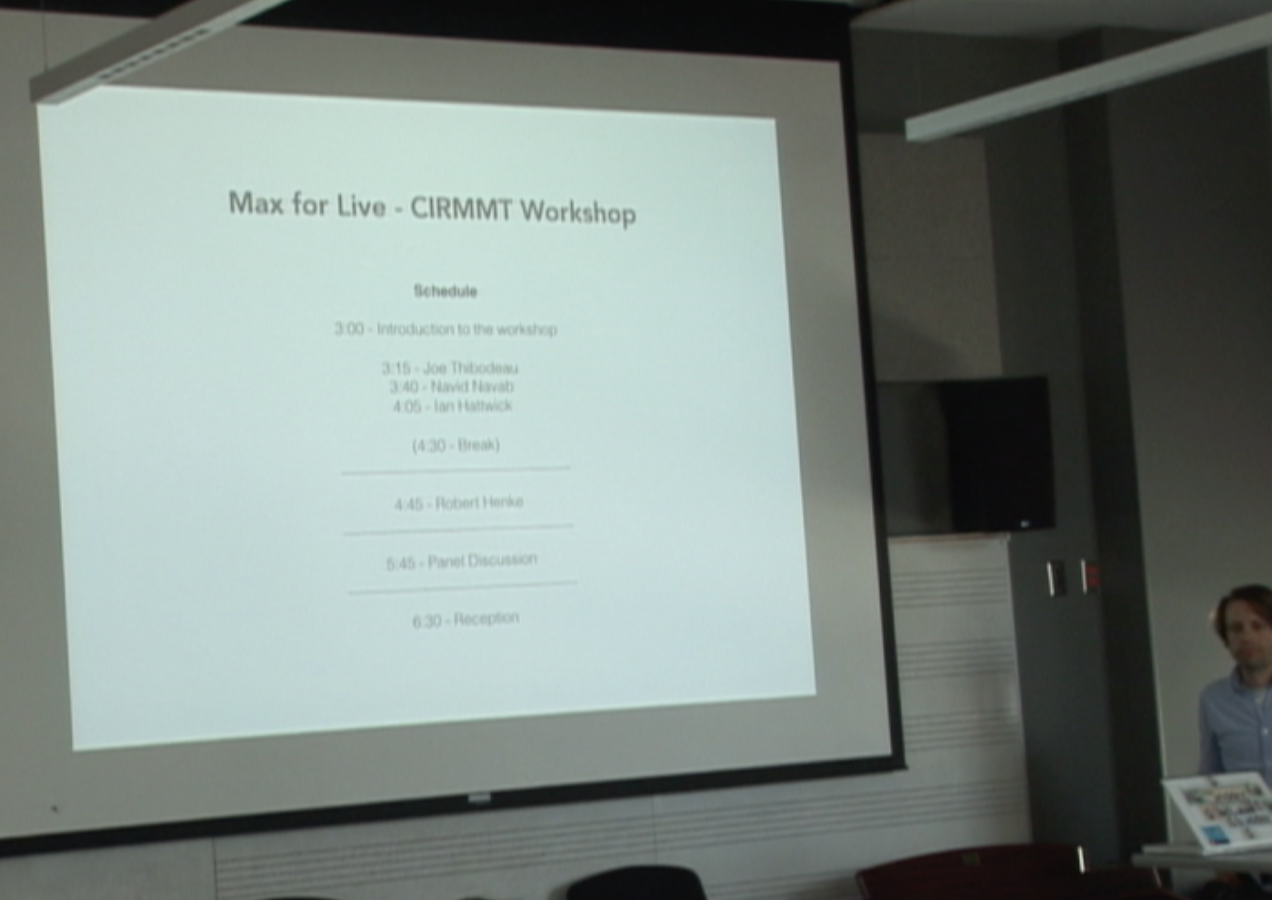How Max Became Live
| Participants: |
Ian Hattwick Robert Landon Morrison Victoria Simon Marcelo M. Wanderley (supervisor) Robert Hasegawa (supervisor) Jonathan Sterne (supervisor) |

|
|---|---|---|
| Funding: | CIRMMT | |
| Project Type: | Student grant project | |
| Time Period: | June 2015–May 2016. (Ongoing.) |
Project Description
The recent release of Max for Live represents a significant merger of two music software paradigms—patch programming languages (Max/MSP) and digital audio workstations (Ableton Live). The integration of these disparate programs into a single interface signals the fusion of two historically distinct threads of development in computer music. In this project, we aim to pinpoint the musical, cultural, and philosophical values embedded within each of these paradigms, to trace their historical conjunction in the development of Max for Live, and to create a new work informed by these analyses.
We will research the discourse surrounding the software through its marketing materials and reception in popular music culture, the aesthetic values embedded in its interface, and its influence on the creation of musical systems and works. Specifically, our research process will include a historical genealogy of the software interface, an analytical survey of technical documentation for existing music, the creation of a new composition by Ian Hattwick, and an ethnography detailing the genesis of this new work. By adopting an interdisciplinary approach to the material, we intend to draw the fields of music theory, music technology, and sound studies into a discussion about the impact of technological mediation on compositional process, musical product, and performance practice.
Outputs from this project will include a joint paper between the primary researchers, a new musical work to be presented at the CIRMMT 2016 Symposium, a series of individual conference presentations in our respective fields, and the organization of an interdisciplinary CIRMMT workshop to present our findings and expand the discussion to include input from invited guests.
